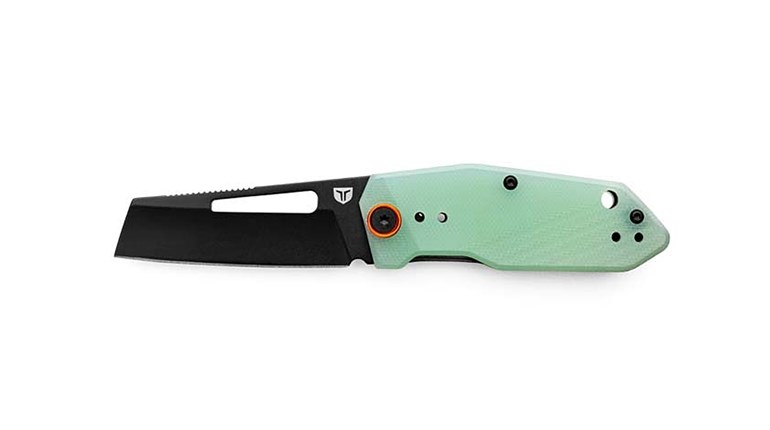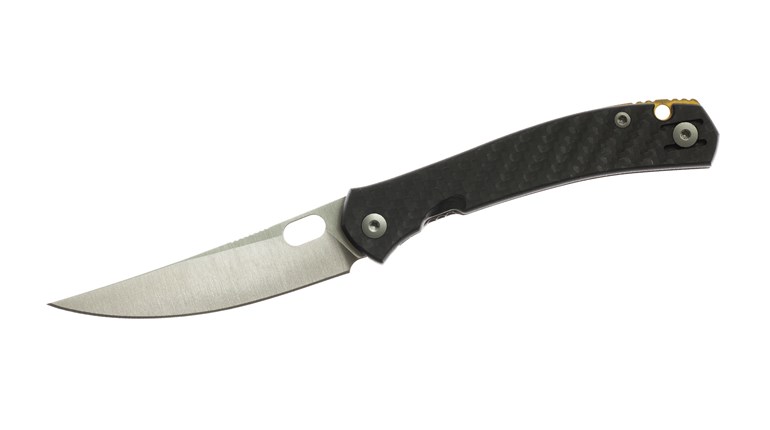
Defending yourself from an attacker can be daunting, and having the right tool can make all the difference. Any knife is a defense blade in the correct context. While firearms are often the go-to choice for self-defense, they may not always be the most practical or legal option. Here is where defensive blades come into play. Let’s begin to explore the basics of defensive blades, including the different types of steel, blade profiles and whether you might want a fixed or folding knife. By the end, you'll better understand how to choose the right tool to help keep you safe in a potentially dangerous situation.
Which Steel?
Knives kept close to the body can corrode in specific environments. In the past, carbon steel was the only option available for knife-making. However, with technological advances, newer and more efficient options have emerged within the stainless-steel industry. Nowadays, various stainless-steel options are available, providing excellent durability and resistance to corrosion. To name a few, 154CM, S35VN and MagnaCut are the current top runners. They all offer excellent edge retention, toughness and corrosion resistance.
Blade Profiles
 Choosing the right blade profile can make a difference in self-defense. There are several blade shapes to choose from, each with advantages and disadvantages. A tanto blade profile is useful for self-defense due to its strong piercing point and ability to penetrate rigid materials. Additionally, the straight edge of the blade provides a more controlled and precise cut. The drop point blade is a popular choice, featuring a curved edge perfect for slicing and cutting. For those who prefer a more aggressive profile, the double-edged blade is a good option, featuring a sharp edge on both sides. However, this blade type may be restricted in some areas. A spear point blade is a popular choice for self-defense due to its symmetrically shaped tip and strong point. It offers a good balance between piercing and slicing ability, making it a versatile option for defensive purposes. Ultimately, the best blade profile for self-defense will depend on individual preferences and the specific situation.
Choosing the right blade profile can make a difference in self-defense. There are several blade shapes to choose from, each with advantages and disadvantages. A tanto blade profile is useful for self-defense due to its strong piercing point and ability to penetrate rigid materials. Additionally, the straight edge of the blade provides a more controlled and precise cut. The drop point blade is a popular choice, featuring a curved edge perfect for slicing and cutting. For those who prefer a more aggressive profile, the double-edged blade is a good option, featuring a sharp edge on both sides. However, this blade type may be restricted in some areas. A spear point blade is a popular choice for self-defense due to its symmetrically shaped tip and strong point. It offers a good balance between piercing and slicing ability, making it a versatile option for defensive purposes. Ultimately, the best blade profile for self-defense will depend on individual preferences and the specific situation.
Cover All the Bases
Carrying a versatile blade that can be a reliable tool for self-defense, practical everyday use or outdoor activities would be an ideal combination of functionality. Having a knife that can perform multiple tasks effectively is like having an all-in-one solution for different situations. It allows you to be prepared for any challenge that may come your way, whether you need to open a package, cut through a rope or protect yourself from harm.
For those who demand a reliable and durable knife, a fixed-blade knife with a solid, full tang is the ultimate solution. These knives are designed to endure heavy use and can even tolerate borderline abuse. They are versatile and can be used for a wide range of activities, including splitting wood in the great outdoors or aiding in preparing food in the kitchen. They can also handle cutting through tough materials without losing their structural integrity. In short, a fixed-blade knife is the ultimate one-hander knife.
Fixed and Folding Knife
 A fixed-blade knife is the way to go if you want one that can take a beating and keep cutting. These knives are sturdy and are ideal for heavy-duty tasks like chopping wood, batoning or digging. They are also easy to clean and maintain because there are no moving parts to worry about.
A fixed-blade knife is the way to go if you want one that can take a beating and keep cutting. These knives are sturdy and are ideal for heavy-duty tasks like chopping wood, batoning or digging. They are also easy to clean and maintain because there are no moving parts to worry about.
In law enforcement and military settings, fixed-blade knives are often used for tactical purposes, such as breaching doors (prying), cutting through seat belts, or defending against an attacker. Their sturdy construction and sharp blade make them formidable weapons in the right hands.
On the other hand, folding knives are compact and easy to carry. They can be easily stored in a pocket or pouch, making them a convenient tool to have on hand. In law enforcement and military settings, folding knives are often used for everyday tasks, such as cutting through zip-ties, packaging, or opening boxes. They can also serve as backup knives to your fixed-blade and, in dire situations, a backup to your firearm. Its compact size and portability make it an excellent option for those who like to travel light.
Having a fixed-blade knife and a folding knife in your arsenal can provide you with the versatility and reliability you need to handle any situation. These two types of knives can complement each other and give you the cutting edge to succeed. So, add them to your collection, your future self will thank you.



































